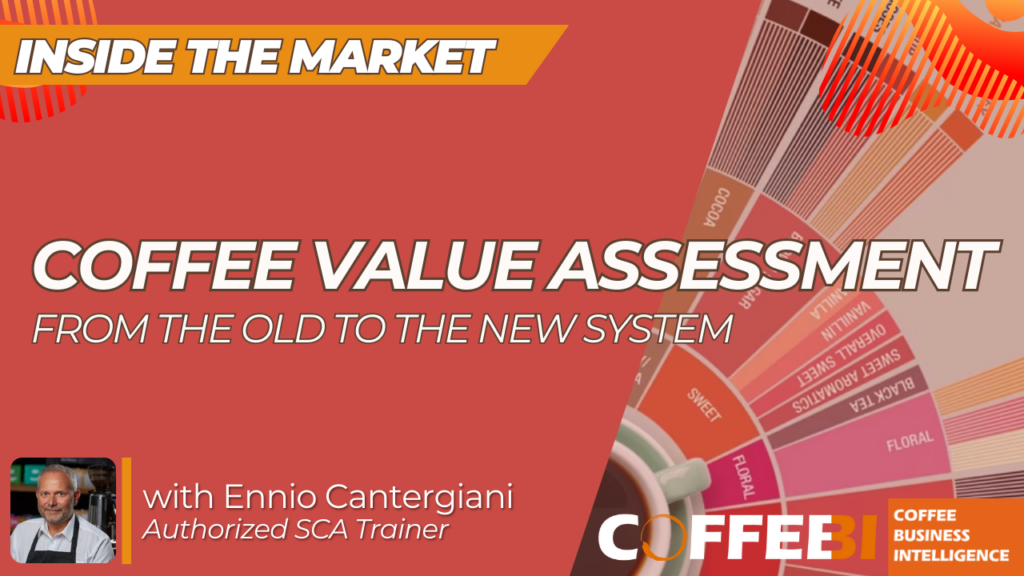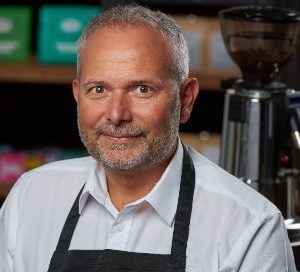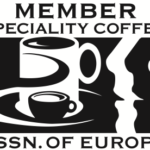Coffee Value Assessment (CVA): From the Old to the New System
In this episode of the miniseries “Inside the Market”, Ennio Cantergiani, who manages L’Académie du Café in Switzerland, introduces the new Coffee Value Assessment protocol by SCA.
Assessing Coffee Value: The Origin of Creating a Tasting Protocol
A few decades ago, the Specialty Coffee Association found itself at a crucial juncture. It was evident that the coffee industry had evolved and grown in leaps and bounds over the past two decades, and it was clear that new approaches and concepts needed to be introduced to keep up with these changes. The existing cupping form, which had been developed in 2004, served its purpose efficiently for a period. It was a tool primarily designed for evaluating washed Arabica coffees, which were the mainstay of the industry back then.

However, as the industry diversified, this form began to be used for natural coffees as well. While it served the purpose to a certain extent, it soon became apparent that the form was not comprehensive enough to cover the nuanced aspects of natural coffees and new post-harvest processes that were gaining popularity. The complexities and variations of the new processes were not adequately represented in the old form, leading to a gap in the evaluation process.
Recognizing this, the Specialty Coffee Association acknowledged that it was necessary to adapt the existing methods or introduce something entirely new to bridge this gap. It was essential not just for the sake of progress, but also to ensure that the new and innovative processes received the recognition they deserved. This realization marked the genesis of the Coffee Value Assessment (CVA), a revolutionary approach aimed at capturing the evolving dynamics of the coffee industry.
About 20 years after its launch, we are transitioning from the old CVA system to the new one. The CVA provides a comprehensive 360-degree evaluation of green coffee, utilizing intrinsic, extrinsic, descriptive, and affective forms. The value of the coffee is not merely based on a qualitative score but incorporates a range of other parameters.
The descriptive form is both useful and simple to use. The Check All That Apply (CATA) method is straightforward, enabling judges to quickly and accurately select the appropriate descriptors without needing to resort to ambiguous terms.
In my view, the affective form is the most challenging to implement because it no longer requires calibration.
How Roasters Respond to Coffee Value Assessment
It took us two full decades, twenty long years filled with constant persuasion and negotiation, to finally convince the stalwarts of the coffee industry of the necessity of using a cupping form. Just when we were on the brink of a collective sigh of relief, believing they had finally agreed to implement this crucial tool, the Specialty Coffee Association (SCA) decided to throw a curveball – they decided to change the form. As one can imagine, such a significant and unexpected alteration was met with a lot of scepticism, a whirl of doubts and questions from different corners of the industry. The change wasn’t just a minor tweak, after all.
Now, it has become mandatory for Authorized SCA Trainers (ASTs) to take on the mantle of teaching the new CVA system. They are also expected to discontinue using the old cupping form and adopt this new system wholeheartedly. However, the transition is not going to happen overnight. In the real world, outside of theory and dictate, both systems will coexist for a while. It’s a period of transition where the old and new will run side by side until eventually, one will prevail and become the industry standard.

Ennio Cantergiani runs L’Académie du Café in Switzerland where he teaches coffee modules and offers consultancy services on coffee topics ranging from post-harvest processing to coffee capsules. With a strong expertise in flavour science, particularly in the analysis of flavouring compounds, he has worked for Nestlé, Firmenich, Heineken, La Semeuse, Carasso, and now runs his own company, EC SuccessFood Ltd. For



